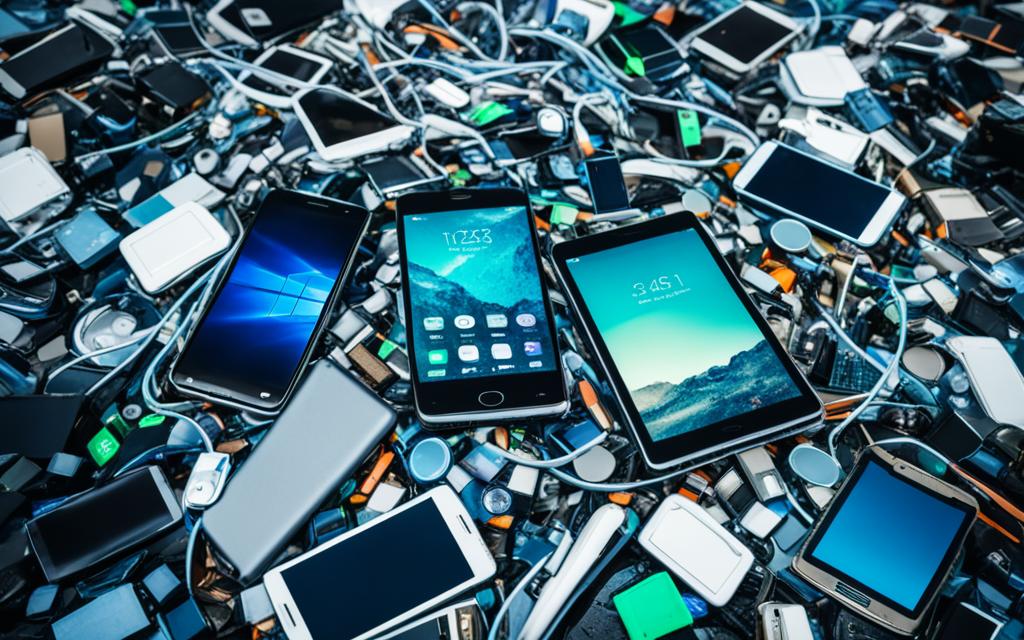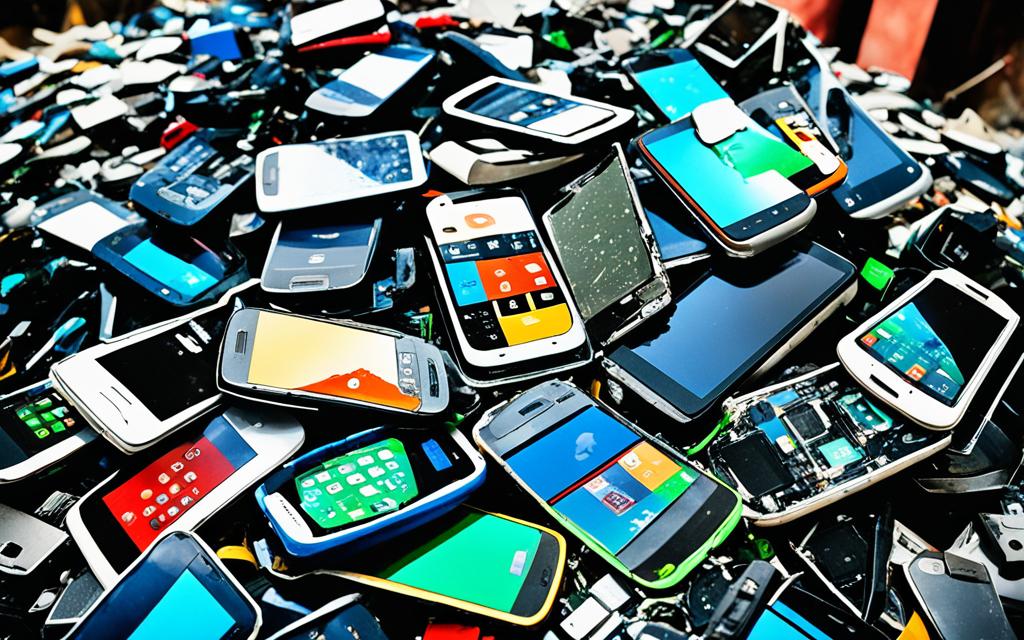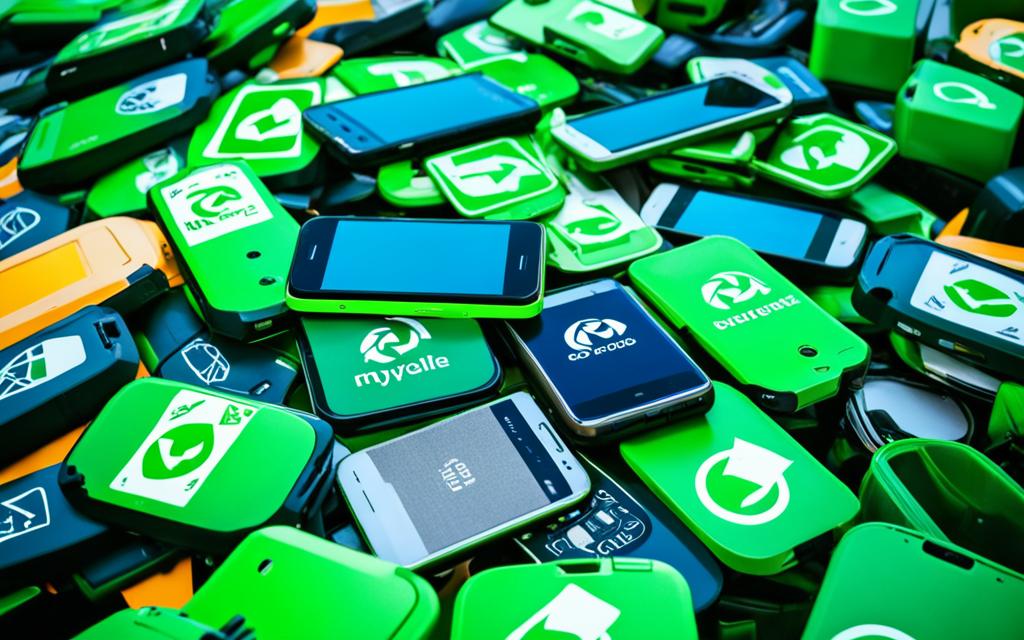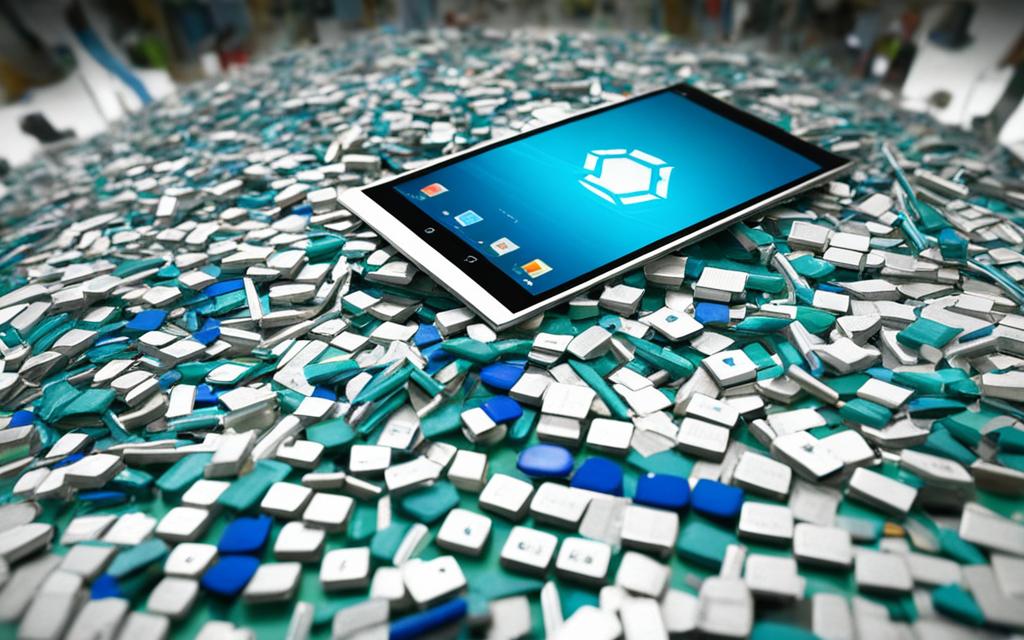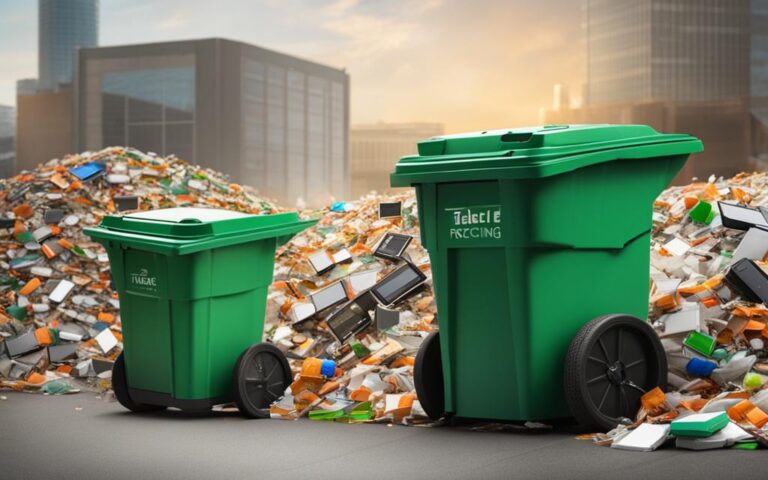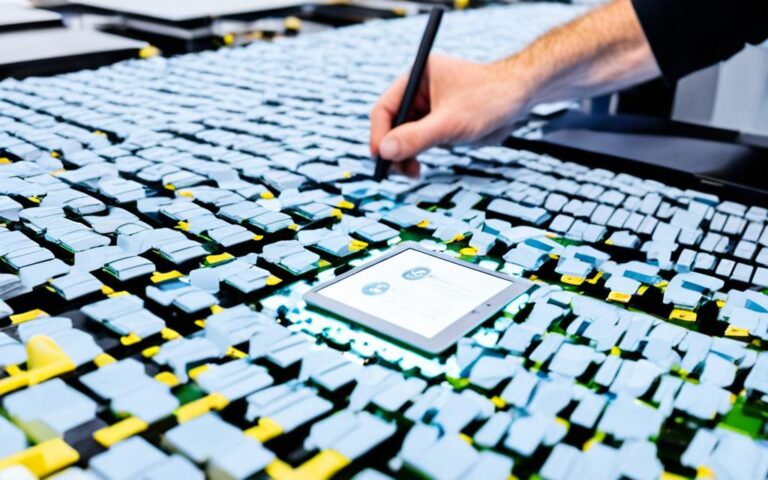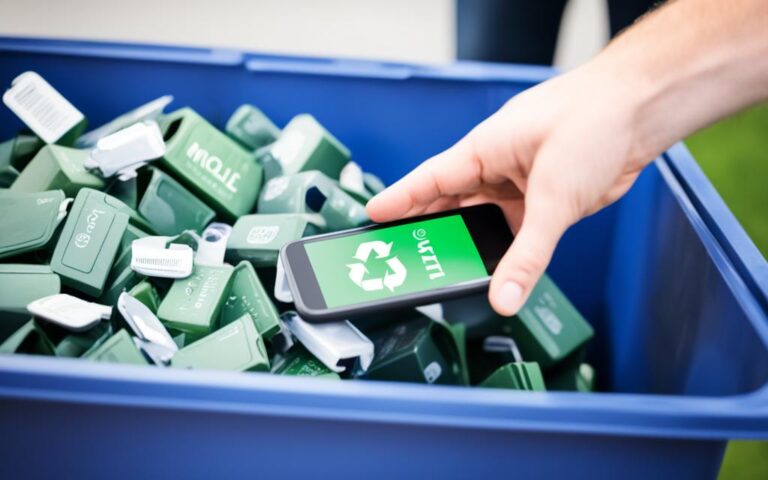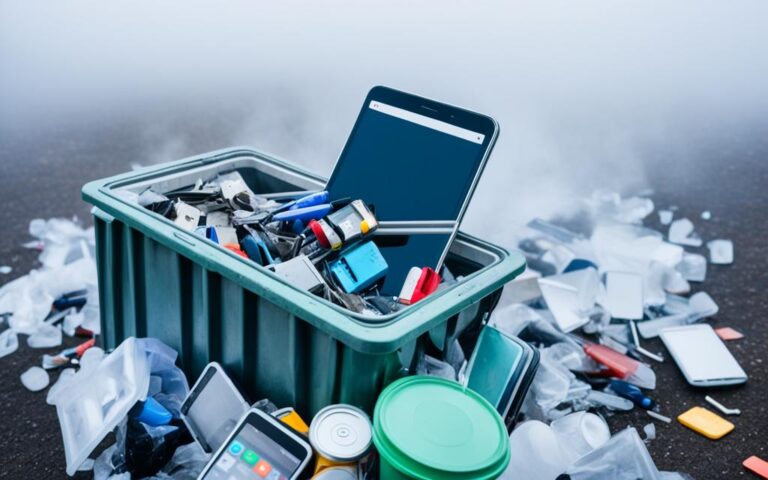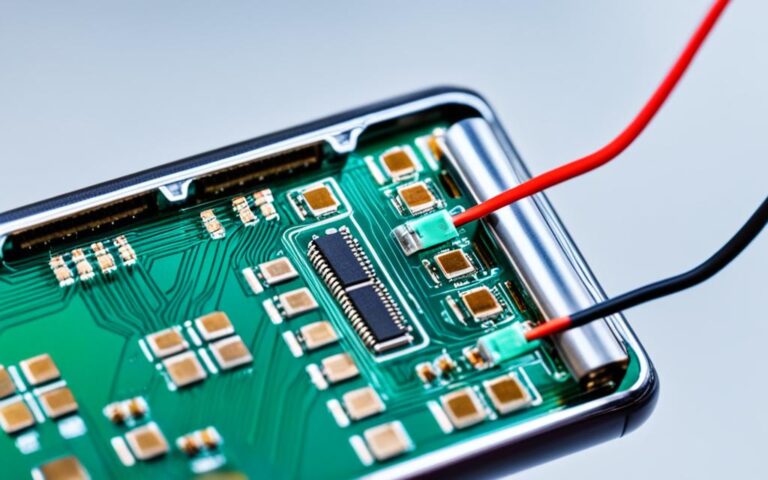The Ultimate Guide to Recycling Your Phone and Tablet: Tips, Tricks, and Best Practices
Electronic waste, or e-waste, is a concerning issue in today’s rapidly advancing technological age. With new gadgets constantly being released, it’s important to know how to properly recycle outdated or broken electronics. This article will explore the importance of recycling electronic devices, the process involved, and provide tips and best practices for individuals and communities to contribute to a more sustainable future.
Recycling your old phones and tablets not only helps in reducing e-waste but also helps conserve valuable resources. By recycling these devices, you can prevent harmful substances from entering landfills and polluting the environment. Additionally, you contribute to the recovery of precious materials that can be reused in the manufacturing of new products.
This ultimate recycling guide will walk you through the steps you need to take to ensure a responsible and effective recycling process for your phones and tablets. From understanding the environmental impact of e-waste to finding local recycling options and following specific guidelines for different devices, you’ll have all the information you need to make a positive impact.
Join us in the journey towards a greener future by embracing electronic recycling. Together, we can create a world where recycling electronic devices is the norm, not the exception. Let’s start making a difference today!
Understanding E-Waste: Grasping the scale and environmental impact of electronic waste
Electronic waste, commonly known as e-waste, encompasses a wide range of discarded devices, from smartphones and laptops to large appliances. In today’s rapidly evolving technological landscape, the turnover of technology is constant, resulting in a significant amount of waste. What many may not realize is the environmental impact that accompanies this waste.
E-waste contains hazardous materials such as lead, mercury, and cadmium, which can pose serious health and ecological risks if not disposed of properly. These substances can contaminate soil, water sources, and the air we breathe, impacting both human and environmental health. To truly understand the magnitude of this issue, we must grasp the scale of global e-waste generation.
“The global scale of e-waste is staggering, with millions of tons generated each year.”
Each year, millions of tons of e-waste are generated worldwide. This staggering quantity speaks to the urgent need for effective recycling practices. Without proper recycling and disposal methods, e-waste can end up in landfills or informal recycling sites, exacerbating the environmental impact and potential health hazards.
By advocating for responsible e-waste recycling and understanding its scale and environmental consequences, we can harness the power of collective action to address this pressing issue. Let’s explore the scope of e-waste generation and foster awareness of the importance of sustainable electronic waste management.
Recycling Process: Insights into how electronics are recycled and the benefits of this process
Recycling electronics is a complex but crucial process. It involves the breaking down of devices to recover valuable materials like gold, silver, and copper, which can be reused in new products. This not only conserves natural resources but also reduces the environmental impact of mining and manufacturing.
The recycling process typically includes collection, sorting, processing, and recovery stages. Let’s take a closer look at each step:
- Collection: Electronic devices are collected from various sources such as individuals, businesses, and recycling programs. This is an important stage as it ensures that no valuable materials are lost and that hazardous materials are safely disposed of.
- Sorting: Once collected, the devices are sorted based on their type, size, and material composition. This allows for efficient processing and ensures that the right methods are used to extract valuable materials.
- Processing: The sorted devices are then processed to extract valuable metals and components. This can involve various techniques such as shredding, crushing, and smelting. During this stage, hazardous substances are also carefully removed and disposed of properly.
- Recovery: Finally, the valuable materials recovered from the electronic devices are transformed into raw materials that can be used in the production of new electronics or other products. This reduces the need for mining new resources and helps to conserve valuable natural reserves.
The benefits of recycling electronics are numerous and far-reaching:
- Resource Conservation: By recycling electronic devices, we can minimize the need for raw materials extraction, saving precious resources like metals, plastics, and rare earth elements.
- Energy Savings: Recycling requires less energy compared to the production of new electronics. This leads to significant energy savings and a reduction in greenhouse gas emissions.
- Economic Opportunities: The recycling and refurbishing industries provide jobs and economic opportunities, contributing to local economies and fostering sustainability.
The Environmental Impact of Electronic Waste
“Recycling electronics not only conserves resources but also helps reduce the environmental impact of mining and manufacturing.”
As the infographic below illustrates, the recycling process offers a sustainable solution to mitigate the environmental impact of electronic waste:
| Environmental Impact | Benefits of Recycling |
|---|---|
| Extraction of raw materials | Conserves natural resources |
| Manufacturing processes | Reduces energy consumption |
| Landfill pollution | Prevents hazardous waste leakage |
| Greenhouse gas emissions | Reduces carbon footprint |
By understanding the recycling process and the benefits it offers, we can actively contribute to a greener and more sustainable future.
Local Recycling Options: Finding and utilizing local facilities for electronic waste disposal
Discovering where and how to recycle electronics is crucial. Many communities offer e-waste recycling programs, and some retailers like Best Buy and Staples accept certain types of electronics for recycling. It’s important to check local waste management guidelines for specific instructions and restrictions. Additionally, choosing certified e-waste recyclers ensures responsible handling and disposal of electronic devices.
Specific Electronic Recycling: Guidelines for recycling common devices like cell phones, laptops, and TVs
Different electronic devices require specific recycling approaches. When recycling cell phones and laptops, it is recommended to perform a factory reset and remove SIM cards to protect personal information. Additionally, checking for manufacturer take-back programs for these devices can ensure responsible disposal.
For TVs, many manufacturers offer take-back programs as well. Taking advantage of these programs can help properly recycle TVs and prevent them from ending up in landfill sites.
When recycling printers, it is important to remove ink cartridges separately. These cartridges may be recyclable through various programs provided by manufacturers or third-party organizations.
Exploring local drop-off options and certified e-waste facilities is advised for responsible recycling of various electronic devices. By utilizing these resources, you can contribute to environmental sustainability and help minimize the impact of electronic waste.
| Device | Recycling Guidelines |
|---|---|
| Cell Phones |
|
| Laptops |
|
| TVs |
|
| Printers |
|
Responsible electronic recycling helps protect the environment by conserving resources and preventing hazardous materials from polluting landfills. By following specific guidelines for each device and utilizing appropriate recycling facilities, you can contribute to a greener future.
Data Destruction and Security: Ensuring personal data is securely erased from devices before recycling
In today’s digital age, data security is of utmost importance. Before recycling electronic devices, it is crucial to ensure that all personal data is securely erased. Failure to do so can pose serious risks, including potential identity theft and unauthorized access to sensitive information.
There are several methods available to securely destroy data on electronic devices. One option is the physical destruction of hard drives, which involves physically damaging the storage medium to render the data irretrievable. This can be done through techniques like shredding or drilling holes into the drives.
Another method is degaussing, which involves demagnetizing the data storage medium, effectively erasing all the data contained within. Degaussing is commonly used for magnetic media such as hard disk drives and magnetic tapes.
For those who prefer a software-based approach, reliable data erasure software can be used to systematically overwrite the data on the device, making it unrecoverable. These software programs follow industry-standard algorithms to ensure complete data destruction.
Whichever method is chosen, it is essential to follow the manufacturer’s guidelines and recommendations for data destruction. Some devices may require specific procedures to ensure complete erasure.
“Proper data destruction is not just a recommended practice, but a legal obligation to protect personal information,” says Sarah Thompson, a data security expert. “By securely erasing data before recycling electronic devices, individuals can contribute to a safer and more responsible approach to electronic waste management.”
By prioritizing data destruction and security, individuals can take proactive steps to protect their personal information and contribute to the overall effort of responsible electronic recycling.
The Importance of Data Destruction:
Data destruction is not only essential for individual privacy but also plays a crucial role in maintaining data security at a larger scale. Organizations, businesses, and government agencies must adhere to strict data protection regulations when disposing of electronic devices that may contain sensitive or confidential information.
A comprehensive data destruction strategy safeguards against potential data breaches, protects customer information, and mitigates the risk of legal and reputational consequences. It ensures that data is securely erased or destroyed, preventing it from falling into the wrong hands.
Comparison of Data Destruction Methods
| Data Destruction Method | Description | Advantages | Disadvantages |
|---|---|---|---|
| Physical Destruction | Damaging the storage medium to render data irretrievable. | – Ensures complete destruction of data – Suitable for a variety of devices |
– Requires specialized equipment – May result in unrecoverable loss of device functionality |
| Degaussing | Demagnetizing the data storage medium to erase all data. | – Effective for magnetic media – Repeatable process |
– Limited to magnetic media only – Requires specific equipment |
| Data Erasure Software | Using software programs to overwrite data on the device. | – Can be applied to various devices – Follows industry-standard algorithms |
– Relies on the integrity and effectiveness of the software – Can be time-consuming for large storage capacities |
Above table showcases a comparison of different data destruction methods and their respective advantages and disadvantages.
Regardless of the chosen method, it is essential to take necessary precautions to protect personal and sensitive data. Proper data destruction is an integral part of the electronic recycling process and ensures a secure and responsible approach to managing electronic waste.
Conclusion
Electronic recycling is not only essential for the environment but also a legal obligation in many regions. The rapid advancement of technology has led to a significant increase in e-waste, posing serious environmental and health risks. By understanding the importance of recycling and following proper disposal guidelines, we can contribute to reducing the harmful impact of electronic waste.
Together, we can create a sustainable future where electronic recycling becomes the norm rather than the exception. Every small step towards responsible e-waste management counts in our journey towards a greener planet. Whether it’s recycling our old smartphones, laptops, or TVs, or seeking out local recycling facilities, our collective efforts make a significant difference.
Let’s take the initiative to educate ourselves and our communities about the benefits of electronic recycling. By spreading awareness and engaging in sustainable practices, we can protect our environment, conserve valuable resources, and promote a circular economy. Remember, the power to make a positive change lies in our hands. Let’s embrace electronic recycling and pave the way for a better, cleaner future.
FAQ
Why is recycling electronic devices important?
Recycling electronic devices is important because it helps to conserve natural resources, reduce environmental impact, and prevent hazardous materials from harming our health and ecosystems.
What materials can be recovered through electronic recycling?
Electronic recycling allows for the recovery of valuable materials such as gold, silver, and copper, which can be reused in the production of new products.
Where can I recycle my electronic devices?
Many communities offer e-waste recycling programs, and certain retailers like Best Buy and Staples accept specific types of electronics for recycling. It’s important to check local waste management guidelines for instructions and restrictions.
How should I prepare my cell phone and laptop for recycling?
For cell phones and laptops, it is recommended to perform a factory reset, remove SIM cards, and check for manufacturer take-back programs.
What should I do with my old TV?
When recycling TVs, it’s important to check for manufacturer take-back programs. These programs often offer recycling options for old televisions.
How do I dispose of ink cartridges from printers?
When recycling printers, it’s important to remove ink cartridges separately. Many office supply stores and recycling facilities accept ink cartridges for proper disposal.
How can I ensure my personal data is securely erased before recycling electronic devices?
Personal data can be securely erased through methods such as physical destruction of hard drives, degaussing, or using reliable data erasure software.
Is recycling electronic devices a legal requirement?
Recycling electronic devices may be a legal requirement in many regions. It’s important to understand and comply with local regulations regarding e-waste disposal.


